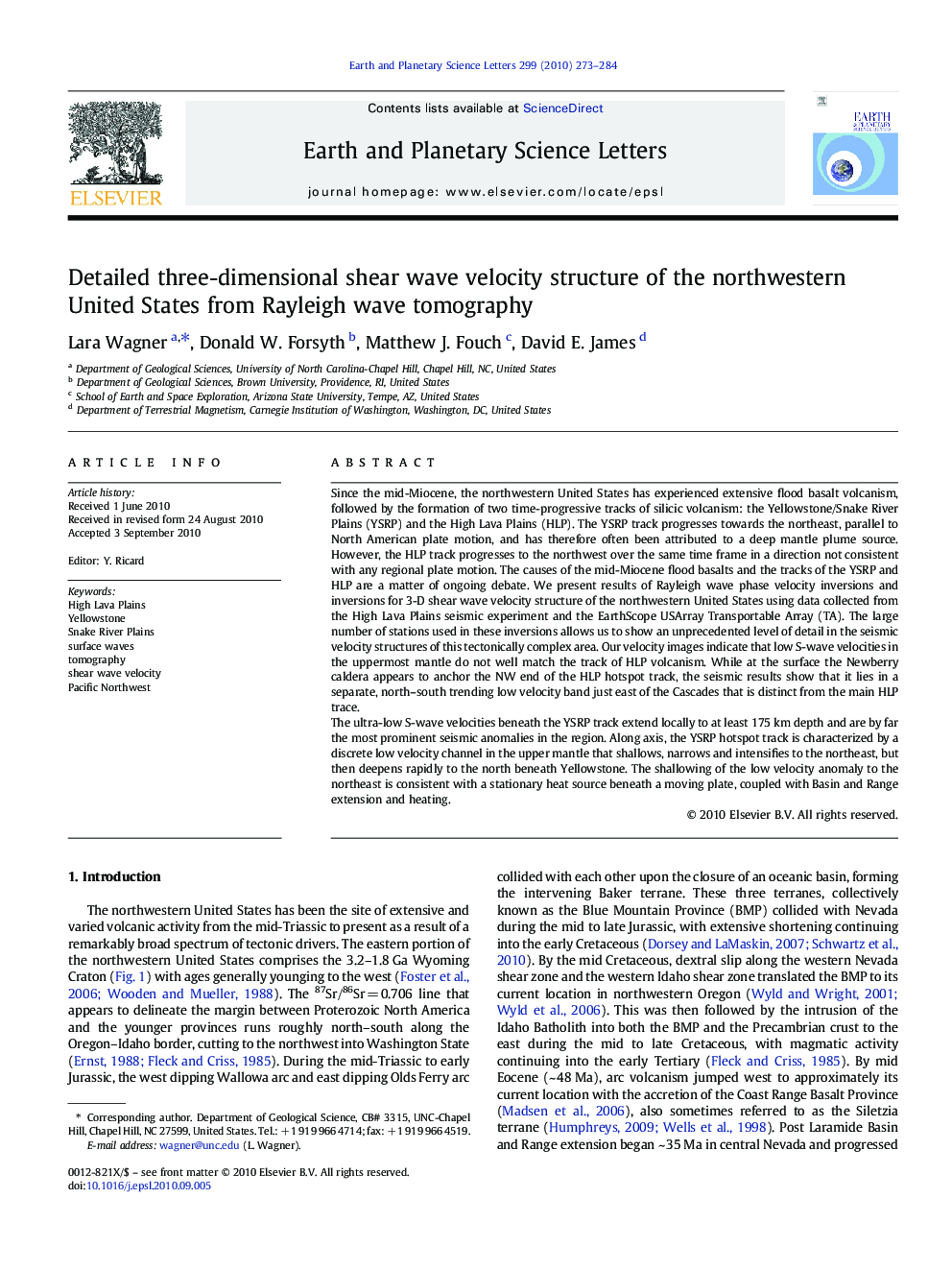| Article ID | Journal | Published Year | Pages | File Type |
|---|---|---|---|---|
| 4678298 | Earth and Planetary Science Letters | 2010 | 12 Pages |
Since the mid-Miocene, the northwestern United States has experienced extensive flood basalt volcanism, followed by the formation of two time-progressive tracks of silicic volcanism: the Yellowstone/Snake River Plains (YSRP) and the High Lava Plains (HLP). The YSRP track progresses towards the northeast, parallel to North American plate motion, and has therefore often been attributed to a deep mantle plume source. However, the HLP track progresses to the northwest over the same time frame in a direction not consistent with any regional plate motion. The causes of the mid-Miocene flood basalts and the tracks of the YSRP and HLP are a matter of ongoing debate. We present results of Rayleigh wave phase velocity inversions and inversions for 3-D shear wave velocity structure of the northwestern United States using data collected from the High Lava Plains seismic experiment and the EarthScope USArray Transportable Array (TA). The large number of stations used in these inversions allows us to show an unprecedented level of detail in the seismic velocity structures of this tectonically complex area. Our velocity images indicate that low S-wave velocities in the uppermost mantle do not well match the track of HLP volcanism. While at the surface the Newberry caldera appears to anchor the NW end of the HLP hotspot track, the seismic results show that it lies in a separate, north–south trending low velocity band just east of the Cascades that is distinct from the main HLP trace.The ultra-low S-wave velocities beneath the YSRP track extend locally to at least 175 km depth and are by far the most prominent seismic anomalies in the region. Along axis, the YSRP hotspot track is characterized by a discrete low velocity channel in the upper mantle that shallows, narrows and intensifies to the northeast, but then deepens rapidly to the north beneath Yellowstone. The shallowing of the low velocity anomaly to the northeast is consistent with a stationary heat source beneath a moving plate, coupled with Basin and Range extension and heating.
